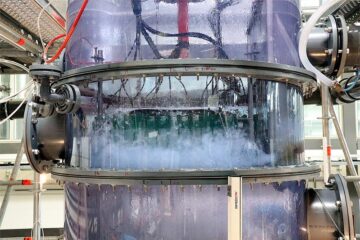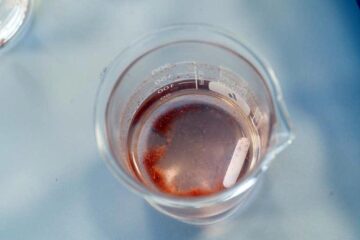Scientists Coax Neurons from Bone Marrow Stem Cells

As part of their continuing effort to skip over the ethical and political hurdles surrounding embryonic stem cells, researchers have unlocked even more potential from the adult kind. New findings suggest that a biochemical cocktail can coax adult bone marrow stem cells to become neurons, according to a report presented yesterday at the annual meeting of the Society for Neuroscience in San Diego. But although the ability to effect such a metamorphosis may someday hold promise for treating neurodegenerative ailments such as Parkinson’s disease, the transformed cells currently revert back to their primordial state within two to three days.
Stem cells from adult bone marrow normally generate bone, muscle, cartilage and fat cells—a limited set compared with embryonic stem cells, which can spawn the full spectrum of adult tissues. Prior research with cultured tissue had shown that a mix of chemicals could change bone marrow stem cells from mice to those resembling brain cells, but when a team led by neurologist Lorraine Iacovitti of Thomas Jefferson University in Philadelphia tried the same brew on human cells, the number altered was modest. After experimenting with several different cocktails, the researchers hit on a mix that transformed 100 percent of cultured stem cells into those that looked like neurons in under an hour. „It’s really the most dramatic thing we’ve ever witnessed in the lab,“ Iacovitti says.
She doesn’t know yet whether they will act like neurons, but the changed cells seem to produce the neurotransmitter known as GABA. Cells that make GABA deteriorate in Huntington’s disease, Iacovitti notes. She hopes to find dopamine-producing neurons to replace those lost in Parkinson’s disease. Generating neurons from adult stem cells „would be a huge leap forward and put to rest a lot of the ethical issues we’ve been grappling with for years,“ she explains. People are also less likely to reject transplanted cells from their own bodies. Iacovitti says she has to tackle the problem of keeping the cells differentiated before she can do anything else, however. „We’re a long way off from thinking about the clinic. But the fact that we can get it to happen is still extremely hopeful“
Media Contact
Alle Nachrichten aus der Kategorie: Medizin Gesundheit
Dieser Fachbereich fasst die Vielzahl der medizinischen Fachrichtungen aus dem Bereich der Humanmedizin zusammen.
Unter anderem finden Sie hier Berichte aus den Teilbereichen: Anästhesiologie, Anatomie, Chirurgie, Humangenetik, Hygiene und Umweltmedizin, Innere Medizin, Neurologie, Pharmakologie, Physiologie, Urologie oder Zahnmedizin.
Neueste Beiträge

Stofftrennung trifft auf Energiewende
Trennkolonnen dienen der Separation von unterschiedlichsten Stoffgemischen in der chemischen Industrie. Die steigende Nutzung erneuerbarer Energiequellen bringt nun jedoch neue Anforderungen für einen flexibleren Betrieb mit sich. Im Projekt ColTray…

Funktionalisiertes Chitosan als biobasiertes Flockungsmittel
… für die Aufbereitung komplexer Abwässer. Forschende am Fraunhofer-Institut für Grenzflächen- und Bioverfahrenstechnik IGB haben ein biobasiertes und funktionalisiertes Flockungsmittel entwickelt, mit dem sich Abwässer mit komplexen Inhaltsstoffen effizient aufreinigen…

„Lücke“ bei CO2-Entnahmen
MCC-geführtes Forschungsteam beziffert erstmals die „Lücke“ bei CO2-Entnahmen. In Anlehnung an den Emissions Gap Report der Uno. Pläne der Staaten zum Zurückholen aus der Atmosphäre sind nicht auf dem Pfad…





















